#greg osby
Text
Steve Coleman: Harmonic Explorer and Visionary Composer in Jazz
Introduction:
Steve Coleman is a legendary figure in avant-garde jazz, pushing the genre’s boundaries and reinventing its potential. Through his inventive works and complex harmonic studies, Coleman has established himself as a distinctive figure in the music industry. This blog post explores Steve Coleman’s life, legacy, and ground-breaking accomplishments.
Unearthing New Harmonic…
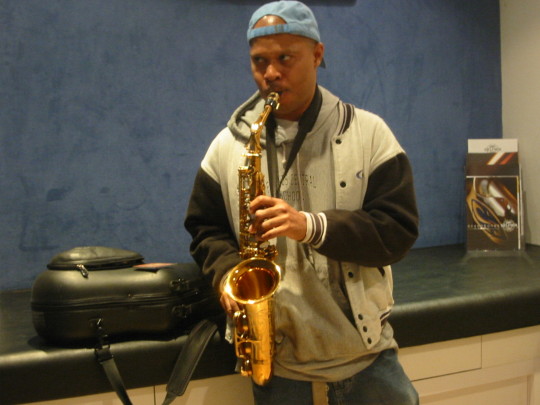
View On WordPress
#Abbey Lincoln#Cassandra Wilson#Cecil Taylor#Dave Holland#David Murray#Doug Hammond#Greg Osby#Jazz History#Jazz Saxophonists#M-Base#Mel Lewis#Michael Brecker#Sam Rivers#Slide Hampton#Steve Coleman#Thad Jones
2 notes
·
View notes
Text
“Everybody Hollerin’ GOAT” — Derek Taylor’s 2022
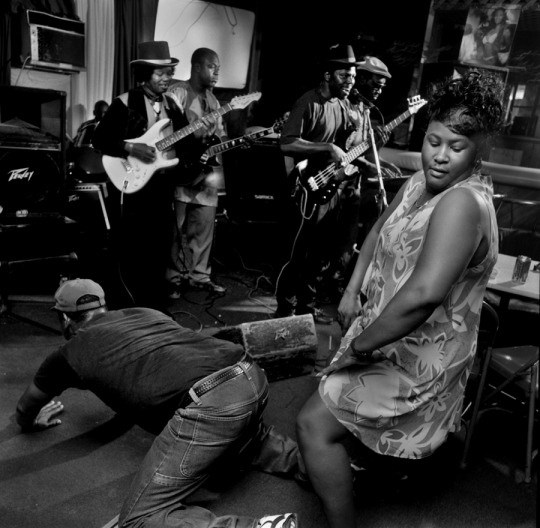
I’ve been reverentially pilfering Bill Steber’s photos as visual ledes for as long as I’ve been writing these Year End paeans (the first was in 2003, making this one the nineteenth). There’s something about Steber’s keen eye for negative space, composition and context that makes me think of Blue Note’s Francis Wolff, if transplanted to the Mississippi hill country. No blues to speak of in the stack of recordings this time around, at least as sourced from that legendary, loamy region, but still lots that’s helped keep my head screwed on and faculties relatively fog-free over the past twelve-months.
Wadada Leo Smith
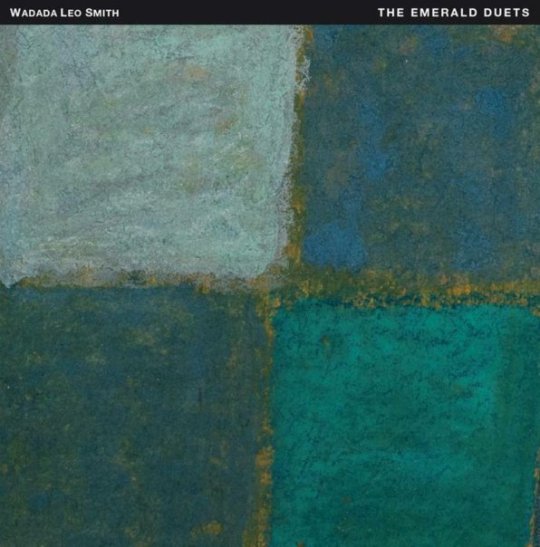
Smith’s ascendance to octogenarian eminence was simply too merry and momentous an occasion to be contained to a single year. As the concluding two entries in a hexalogy of releases on the Finnish TUM label highlighting facets of his multifarious output, Emerald Duets and String Quartets, Nos. 1-12 dropped in May and were also arguably the most ambitious. The Dusted bullpen collectively dug in on both sets in a rousing Listening Post roundtable that forgivably favored the more accessible exploratory encounters with drummers Jack DeJohnette, Andrew Cyrille, Han Bennink and Pheeroan AkLaff.
Joe McPhee

The Powerhouse from Poughkeepsie turned 83 years young in November and as with past years his productive spirit appears immune to enervation or ennui. Ensemble efforts like Survival Unit III’s The Art of Flight (Astral Spirits/Instigation) and Pride of Lion’s No Question No Answers (RogueArt) continue to be the common currency of his artistic realm, but McPhee also found aegis for the release of exhilarating duets with cellist (and freshly-minted MacArthur “genius”) Tomeka Reid (Let Our Rejoicing Rise) and British sax eidolon Evan Parker (Sweet Nothings (For Milford Graves), both pressed on the prolific Corbett vs. Dempsey imprint (see below).
Peter Brötzmann

Speaking again of unstoppable octogenarians, Herr Brötzmann came out of COVID isolation with renewed vigor and a concert calendar still compellingly competitive with musicians a fraction his age. New entries in his edifice-sized discography weren’t nearly as plentiful, but a pair of archival releases still packed a gobsmacking punch. Historic Music Past Tense Future (Black Editions Archive) drops the German reedist and bassist William Parker into the precision polyrhythmic maelstrom of Milford Graves circa spring 2002 across a double slab of vinyl. In a State of Undress (FMP/Be!) is free jazz of a more formal sort with the one-off aggregate of trumpeter Manfred Schoof, bassist Jay Oliver and drummer Willi Kellers tempering the leader’s orotund edges.
Tyshawn Sorey + Greg Osby — The Off-Off Broadway Guide to Synergism (Pi)
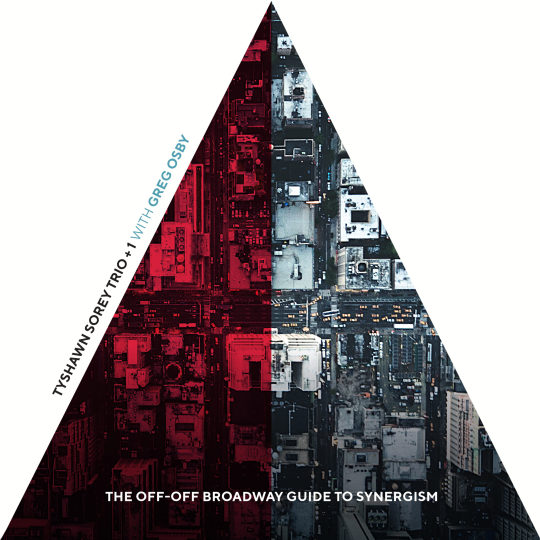
Keeping up with Tyshawn Sorey’s indefatigable activities is a lot like keeping pace with Joe McPhee, a full-time pursuit worth every penny and effort. This three-disc set has the instant enticement of capturing his working trio in the hothouse context of an extended gig at the Jazz Gallery in NYC. Add to that a program of alchemized standards sourced from the Great American Songbook and jazz brethren along with altoist Greg Osby in a rare sideman station and the results become an irresistible trigger pull. In a word: epic.
Cecil Taylor

Taylor’s been gone four-plus-years, but his in-life prolificacy continues to bestow posthumous gifts. Revelatory and digital-only, The Complete, Legendary, Live Return Concert at the Town Hall, NYC, November 4, 1973 (Oblivion) expands greatly on its previously truncated incarnation, Spring of Two Blue-J’s originally on Taylor’s own Unit Core imprint back in 1974. Respiration (Fundacja Słuchaj!) and Live in Ruvo Di Puglia 2000 (Enja) reveal previously unreleased prototypes of his solo repertoire separated by the span of thirty-two years. Sharing a surname with the pianist probably suggests the presence of bias, but I will still ardently go on record in stating that all three are essential.
Albert Ayler — Revelations: The Complete ORTF 1970 Fondation Maeght Recordings (Elemental)

Previous editions of this material are now obsolete thanks to this magnificent, meticulously assembled set. So invasive were earlier edits and excisions, particularly as concerns the catalytic contributions of Ayler’s life and musical partner Mary Parks (aka Mary Maria), that it’s like hearing the concerts anew. Parks’ memory and jazz history are restored by producer Zev Feldman and his retinue of collaborators. The results are glorious, both in terms of restored fidelity and the extended majesty of Ayler’s last band firing on collective, conflagratory cylinders.
Chris Dingman — Journeys Vols. 1 & 2 (Inner Arts)

Chris Dingman nearly topped my Year End list two-years ago with an ambitious five-disc opus Peace, a dedicatory body of work for solo vibraphone initially conceived as an aural paregoric for his ailing father. The elder Dingman passed away prior to its release and in navigating the grief in the years since, the son’s doubled down on the unaccompanied format as means of realizing Albert Ayler proffered adage that “music is the healing force of the universe.” Journey’s 1 & 2 reflect their predecessor, but also refract it through a sequence of malleted excursions emphasizing melody and repetition in rippling, elliptical patterns that soothe and enthrall.
Corbett vs Dempsey
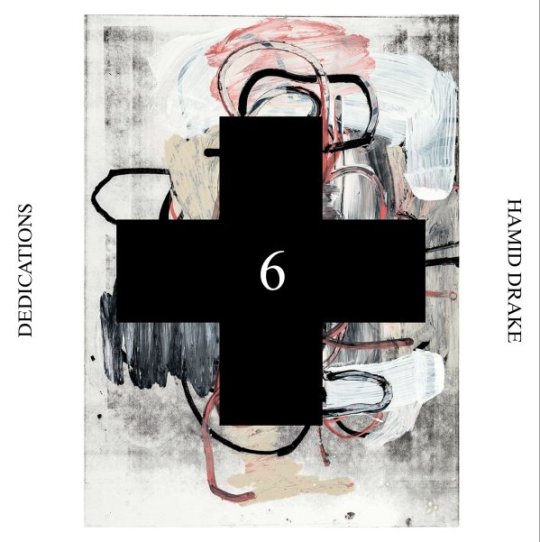
John Corbett is indicative of my favorite species of record collector: an altruist whose obsessiveness in the endeavor is exceeded by his ardor for sharing the spoils of this searches through reissues that completely do the artifacts justice. Chief among the offerings this year, German free jazz pianist Georg Gräwe’s first two forays as a leader, New Movements (1976) and Pink Pong (1978), and the pivotal Globe Unity (1967), which restores Alexander von Schlippenbach’s first multinational large ensemble enterprise to circulation. Also of note, another stack of entries inspired by the Sequesterfest series of concerts initiated during the pandemic. Drummer Hamid Drake’s Dedications features solo percussion-planted encomia to his influences and is probably my pick of the eight titles released so far.
The Pyramids — Aomawa: The 1970s Recordings (Strut)
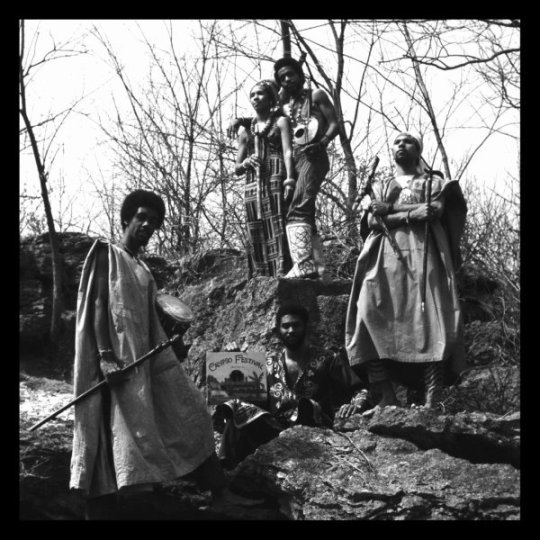
A box set that brings a personal blind spot into bracing focus and rectifies it. The Pyramids initial three albums plus a concert air shot given the deluxe treatment by the Strut label. Ancient to the Future with audible Sun Ra Arkestra and Art Ensemble influences, reedist Idris Ackamoor’s ensemble is never slavish or supine in its interpretations of precedence. Percussion jams are plentiful, as are spiritual jazz overtones, and it all combines in an earthy gestalt that also has a healthy respect and acumen for groove. I’m of an age where regrets feel increasingly impractical, but it’s still good to catch up.
Grounation — The Mystic Revelation of Rastafari (Soul Jazz)
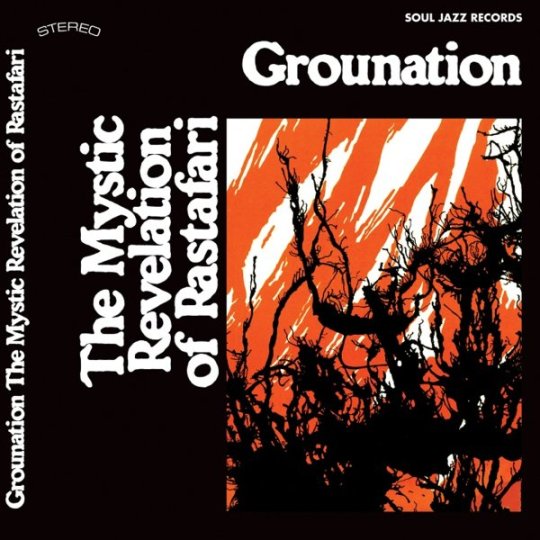
An arguable Jamaican analog to Aomawa in its assemblage of certain analogous ingredients, Groundnation was also something else entirely. Sprawling across three LPs (a milestone in the country’s recording industry), The Mystic Revelation of Rastafari resonates as history lesson, call to arms, sacred text, and adulatory celebration among other appellations. Count Ossie, Cedric IM Brooks and their confreres mined both zeitgeist and musical alloy that had lasting effects not just on reggae, but self-determinate roots-oriented music of all sorts. Soul Jazz’s painstaking attention to accurate reproduction and contextualization is admirable and immersive.
Robbie Basho — Bouquet (Lost Lagoon)
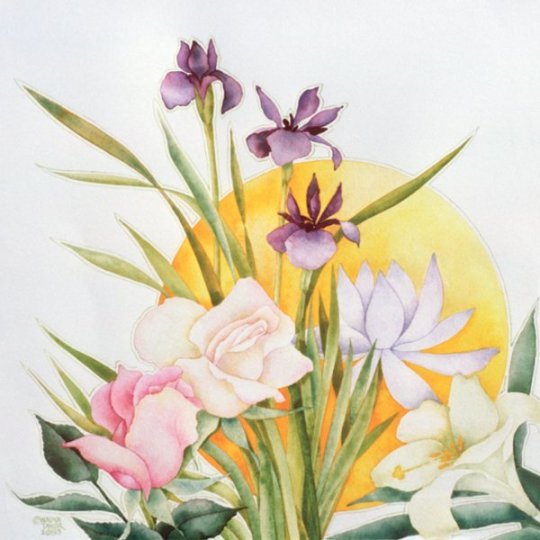
Self-produced, released and circulated in 1984, Basho’s penultimate album tests and perhaps proves the prevailing theory that detractors of his singing far outnumber those of guitar playing. Still, he succeeds where other great polarizers of the pipes like Irene Aebi, Yoko Ono and Ethel Merman fail in his unflappable earnestness and credulity. The self-doubt and cumulative frustrations that haunted Basho in life subsume in the sincerity of his music, strangely sui generis in its intensely personalized strains of borrowed religion, spirituality and mysticism. Mileage varies, but there’s no denying Basho’s commitment to his muses.
Sun Ra

Labels like Modern Harmonic and Cosmic Myth Ra continue to keep Ra relevant even though the Saturnian left the planet decades ago. This year’s passel of reissues includes timely returns of Ra to the Rescue and Universe in Blue, each augmented with extra and/or extended tracks. The latter album includes several showstopping John Gilmore spotlights and ample Ra organ-omics while the former gets its most complete edition yet with a survey of snapshots across 1970s sessions. A genuinely new release, Prophet zeroes in on Ra’s 1986 in-studio experiments with the then-newfangled eponymous console and he responds like a kid in a keyboard candy store with select Arkestral band members, including an ailing June Tyson, in exuberant, if fleeting, support.
Steeplechase

The Danish label is an old reliable in these pages, plugging along with current releases from its international stable of artists alongside occasional, but always welcome, reissues. Stephen Riley’s My Romance isn’t the tenorist’s first recording with B-3 organ, but it does mark his first as a leader. Electing Brian Charette to cover the keys with just Billy Drummond on cans in support is a stripped-down stroke of genius. Vintage concert performances with bop pianist Duke Jordan in the company of Danish tenorist Bent Jaedig (Montmartre ’73) and archival recordings by tenorist Brew Moore (Special Brew) and dearly departed Philly guitarist Monette Sudler (In My Own Way) stand out, too.
Bear Family
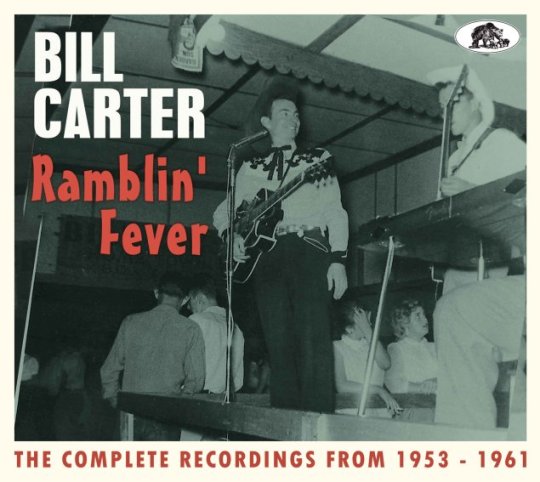
Bear Family basically has access to a bank vault-sized archive when it comes to vintage country fare. It’s a mighty good thing because Bill Carter holds at best token traction with the 21st century arbiters of the genre. Sixty-seven tracks across two discs chart the ups, downs, and all arounds of Carter’s career (The Complete Recordings from 1953 to 1961) jumping from Western Swing to hillbilly to honkytonk to rockabilly. Perhaps best of all, Carter was 92, lucid, and around to see the release back in March. Western Swing legend Bob Wills’ younger brother Billy Jack was the recipient of similar treatment with Cadillac In Model ‘A’, a comparatively stingy 31-track survey and latest in the label’s long running Gonna Shake This Shack Tonight series.
Ezz-thetics

Born out of both providence and necessity, the Ezz-thetics label exists in the continued absence of the venerated Hat Hut lineage of imprints. The earlier catalogs are tied up in legal proprietary knots, leaving owner Werner X. Uehlinger to throw caution to the curb and pursue a longstanding dream of applying his decades-honed judgment as a producer to free/jazz classics. The venture immediately ran afoul of critics who took umbrage with his audacity in side-stepping stateside copyright considerations and reimagining sacred texts. Wherever one opines on those controversies, there’s no denying the new lease audio engineer Michael Brandli has accorded the source materials. Cecil Taylor’s (With) Exit to Student Studies Revisited, Paul Bley’s Play Annette Peacock Revisited, and Sun Ra’s Nothing Is… Completed & Revisited are exemplary stand outs.
Fresh Sound

Lisbon-based Fresh Sound is another reissue label that continuously courts its share of contention. The logical, if admittedly self-serving counter is that American rights holders to nearly all of the music that they traffic in couldn’t be bothered to apply even a fraction of the care or quality they bring to bear. Exacting attention to the most esoteric and obscure jazz artists has long been the archetype. This year’s batch includes definitive collections of trumpeter Dave Burns (1962 Sessions), baritone saxophonist Virgil Gonsalves (Jazz in the Bay Area 1954-1959), altoist Joe “Mouse” Bonati (Portrait of a Jazz Hero) and Belgian vibraphonist Fats Sadi (Sadi’s Vibes: A Retrospective 1953-61).
Morteza Mahjubi — Selected Improvisations from Golha, Parts 1 & 2 (Death is Not the End)

Tempered instruments aren’t an intuitive match for micro-tonal composition, but that hasn’t hindered musicians of manifold ethnicities from adapting them to the intricacies of indigenous music. Iranian pianist Morteza Mahjubi did so prolifically during his lifetime, recording his innovations for Golha (Flowers of Persian Song and Poetry) radio programs between 1956 and his passing in 1965. Spread over two album-length discs (with hopefully future volumes to follow), Mahjubi applies his custom tuning system to the ivories and approximates the sonorities of endemic instruments like the tar (lute) and santur (hammered dulcimer).
Branko Mataja — Over Fields and Mountains (Numero)

Mataja’s biography reads like a Spielbergian screenplay. Abducted from his native Belgrade and conscripted to a German work camp during WWII, the lifelong guitar enthusiast worked a variety of trades after being liberated, before emigrating to England, then Canada, and finally a string of stateside cities. Mataja eventually settled in Los Angeles where he worked as a barber and started a side business a freelance guitar technician. Memories of his home country haunted him, and he recorded a pair of albums in his garage studio/workshop from which this LP is sourced. Milky, murky reverb and sustain are calling cards, alongside an improvisatory approach to traditional Croatian melodies that’s equal parts melancholic and mysterious.
V/A — Padang Moonrise: The Birth of the Modern Indonesian Recording Industry 1955-1969 (Soundway)

A double-LP + 7” survey stacked with sublime discoveries from coordinates geographic and temporal that beg for an even deeper dive. Reverb-dipped guitars and swirling, droning organs are persistent common denominators alongside varied hand percussion and a revolving cast of melancholic crooners across genders and dialects. It’s cross-cultural music that’s exotica-adjacent and still ripely redolent of American soul. Ghost World’s Enid would’ve had a field day immersing herself in this stuff. I know I have.
Jalaleddin

Old, but still new to me, and perhaps my most listened to platters among the many vinyl discoveries procured on record shop safaris this year. Discogs lists seven albums to Jalaleddin’s name, and I feel fortunate to have found six on the cheap in a single shop. Based in San Francisco in the 1970s and a master of the kanun (Turkish trapezoidal zither,) Jalal Takesh started his musical career cutting belly dance records. Benefiting from a Santana-like broadmindedness, his bandleading would soon conscript musicians of other traditions including Indian ragas, Greek rebetika, and Spanish flamenco. Hand-sketched and colored by an academic friend of Takesh’s, the album cover illustrations are aces, as well.
25 More in No Fixed Order…
Andrew Cyrille/William Parker/Enrico Rava — 2 Blues for Cecil (TUM)
Michael Bisio Quartet — MBefore (Tao Forms)
Ingrid Laubrock/Brandon Lopez/Tom Rainey — No Es La Playa (Intakt)
Patricia Brennan — More Touch (Pyroclastic)
Mark Turner — Return from the Stars (ECM)
Jeb Bishop/Pandelis Karayorgis/Damon Smith — Duals (Driff/Balance Point Acoustics)
Ches Smith — Interpret it Well (Pyroclastic)
Sam Rivers — Caldera (NoBusiness)
Toots Thielemans & Rob Franken — The Studio Sessions 1973-1983 (Dutch Jazz Archive)
The Pyramids — Penetration! (Sundazed)
Horace Tapscott Quintet — S/T (Mr. Bongo)
V/A — Girls with Guitars Gonna Shake (Ace)
John Ondolo — The Hypnotic Guitar of John Ondolo (Mississippi)
Biluka y Los Canibales — Leaf-Playing in Quito 1960 to 1965 (Honest Jon’s)
Myra Melford’s Fire & Water Quintet — For the Love of Fire & Water (RogueArt)
Ndikho Xaba & The Natives — S/T (Trilyte/Mississippi)
Brandon Seabrook — In the Swarm (Astral Spirits)
Sirone — Artistry (Moved by Sound)
William Parker — Universal Tonality (Centering)
Charles Mingus — The Lost Album from Ronnie Scott’s (Resonance)
Markos Vamvakaris — Death is Bitter (Mississippi)
Jeff Parker — Mondays at the Enfield Tennis Academy (Eremite/Aguirre)
Mal Waldron — Searching in Grenoble: The 1978 Solo Piano Concert (Tompkins Square)
Allan Botschinsky Quintet — Live at The Tivoli Gardens 1996 (Stunt)
Jimmy Castor Bunch — The Definitive Collection (Robinsongs)
Derek Taylor
#yearend 2022#dusted magazine#derek taylor#wadada leo smith#joe mcphee#tyshawn sorey#greg osby#cecil taylor#albert ayler#chris dingman#corbett vs dempsey#hamid drake#the pyramids#grounation#robbie basho#sun ra#steeplechase#stephen riley#bear family#bill carter#ezz-thetics#paul bley#fresh sound#fats sadi#morteza mahjubi#branko mataja#Padang Moonrise#jalaleddin
3 notes
·
View notes
Text

Im Konzert gewesen. Ausnahmsweise mal Leute, die nicht sowieso immer kommen: Der Schweizer Schlagzeuger Florian Arbenz hat gerade ein ausladendes Projekt mit Conversations laufen, in #9 konversiert er mit Greg Osby am Saxophon und Arno Krijger an der archaischen Hammondorgel, auf deren Pedalen er auch noch schön den Bass beisteuert. Da hat er die Hände frei. Das ist aufregend, da hätten ruhig ein paar mehr Leute kommen dürfen.
0 notes
Text
Sounds That Have Been Made, EP 115: João Barradas "Amalgamat (Outro)" Featuring Sara Serpa.
You know I generally view the only appropriate places for accordion is Zydeco, with other occasional exemptions being Klezmer and Tango. Everything else should be strictly “go to jail” threshold hits.
I grew up mostly loathing Portuguese folk music employing accordion, so I feel like I can bag on it any way I like. For you Lawrence Welk fans, fight me (cause I will beat you in the face with a…

View On WordPress
0 notes
Text
Arbenz x Krijger x Osby “Conversation #9: Targeted”
Hammer Recordings, 2023
Dziewiąta część cyklu “Conversations” Floriana Arbenza podsumowuje dwie dekady współpracy perkusisty z saksofonistą Gregiem Osbym, a jednocześnie inauguruje działania z nowym partnerem – hammondzistą Arno Krijgerem.
Muzyka Osby’ego miała ogromny wpływ na – kształtującą się dopiero – artystyczną osobowość Arbenza (obu panów dzieli półtorej dekady różnicy wieku).…

View On WordPress
#Arno Krijger#Eddie Harris#Florian Arbenz#George Gershwin#Greg Osby#Hammer Recordings#Victor Feldman
0 notes
Text
LÉGENDES DU JAZZ
GERI ALLEN, LA DURE À CUIRE DU PIANO JAZZ
”If Geri was a man she’d have been celebrated as A Giant a long time ago.”
- J.T. Lewis
Née le 12 juin 1957 à Pontiac, au Michigan, Geri Antoinette Allen était la fille de Mount Allen Jr., un directeur d’école, et de Barbara Jean Allen, une administratrice du gouvernement qui travaillait au service de l’industrie. Allen avait commencé à jouer du piano à l’âge de sept ans. Sa formation comme pianiste de jazz avait débuté au début de l’adolescence.
Allen avait fait ses études au célèbre Cass Technical High School de Detroit, qui avait formé de grands noms du jazz comme Paul Chambers, Wardell Gray, Alice Coltrane, Gerald Wilson et Donald Byrd. Au Cass Technical High School, Allen avait étudié avec le trompettiste Marcus Belgrave, le directeur du Jazz Development Workshop. Bekgrave avait servi de mentor à des sommités du jazz comme le saxophoniste Kenny Garrett et la violoniste Regina Carter. Allen avait plus tard retourné la politesse à Belgrave en l’invitant à participer à l’enregistrement de ses albums ‘’The Nurturer’’ et ‘’Maroons’’ au début des années 1990. Très proche d’Allen, la veuve de Belgrave, Joan, avait décrit ainsi la relation de son mari avec la future pianiste: “Geri called Marcus her musical father. I loved her as my sister. She was not only the pride of the Detroit jazz world, but was the most giving and loving person I have ever known. To be on the bandstand with her or watch her from the stage wings was always a spiritual encounter.”
Avec un autre mentor, le batteur Roy Brooks, Allen avait développé un grand intérêt pour la musique de Thelonious Monk, dont elle avait souvent interprété les compositions.
Après avoir décroché son diplôme d’études secondaires, Allen avait étudié à l’Université Howard, où elle était devenue une des premières étudiantes, tous sexes confondus, du programme de jazz de l’université, qui était alors dirigé par le trompettiste Donald Byrd.
Après avoir obtenu son baccalauréat en 1979, Allen s’était brièvement installée à New York et avait étudié avec le pianiste Kenny Barron. Par la suite, Allen avait étudié à l’Université Howard sous la direction du saxophoniste Nathan Davis et du musicologue ghanéen Joseph Hanson Kwabena Nketia. La thèse de maîtrise d’Allen était une analyse de l’oeuvre du multi-instrumentiste Eric Dolphy.
DÉBUTS DE CARRIÈRE
Après avoir décroché sa maîtrise en ethnomusicologie en 1982, Allen était retournée à New York, où elle avait d’abord accompagné l’ancienne chanteuse des Supremes, Mary Wilson, avant de collaborer avec le saxophoniste Steve Coleman, le fondateur du M-Base Collective. La chanteuse Cassandra Wilson et le saxophoniste Greg Osby étaient également membre du groupe qui combinait les rythmes de la diaspora africaine à l’improvisation et à l’expérimentation.
Tout en saluant la connaissance d’Allen de l’histoire du jazz, Coleman avait déclaré que la pianiste cherchait constamment à découvrir de nouvelles avenues. Coleman avait précisé: “We talked about music from all over the planet, and we talked about music from all eras.” La collaboration d’Allen avec Coleman avait débuté en 1985 dans le cadre du premier album du saxophoniste intitulé “Motherland Pulse”. Allen avait enregistré quatre albums avec Coleman, dont trois avec le groupe Five Elements.
En 1986, Allen avait retourné la politesse à Coleman dans le cadre de son album Open On All Sides In The Middle, qui mettait aussi en vedette son mentor Marcus Belgrave et le tromboniste Robin Eubanks.
Allen avait fait ses débuts comme leader en 1984 sur l’album “The Printmakers’’, un enregistrement en trio avec le contrebassiste Anthony Cox et le batteur Andrew Cyrille dans lequel elle avait démontré une grande virtuosité mélodique et rythmique ainsi que ses remarquables talents de compositrice et d’innovatrice. L’album comprenait plusieurs de ses propres compositions. Toujours en 1984, Allen avait collaboré avec le saxophoniste Oliver Lake dans le cadre de l’enregistrement de l’album Expandable Language publié sur étiquette Black Saint. La même année, Allen avait enregistré l’album Decision In Paradise avec le saxophoniste Frank Lowe.
Travaillant souvent en trio, Allen avait multiplié les collaborations avec de grands noms du jazz comme le contrebassiste Ron Carter et le batteur Tony Williams (sur l’album Twenty One en 1994), le contrebassiste Charlie Haden et le batteur Paul Motian (albums Etudes, 1988 et Live at the Village Vanguard, 1990). Elle avait aussi joué avec le contrebassiste Dave Holland et le batteur Jack DeJohnette (album The Life of a Song, 2004). Allen avait également enregistré deux albums avec Haden dans le cadre du Festival international de jazz de Montréal en 1989, dont un avec la Liberation Music Orchestra.
En 1985, Allen avait enregistré un premier album solo intitulé ‘’Home Grown.’’ En 1987, Allen avait enchaîné avec l’album ‘’Open On All Sides—In the Middle.’’ En 1989, Allen avait enregistré “Twylight’’, un album de compositions originales qui combinait plusieurs instruments de percussion d’origine africaine avec des synthétiseurs. Lors d’un concert en duo avec le pianiste Kenny Barron à Caramoor en 1994, Allen avait interprété à la fois des compositions de Monk et son propre matériel.
Quelques années plus tard, lors d’une performance au Village Vanguard de New York, Allen avait dirigé un quartet composé du contrebassiste Robert Hurst, du batteur Billy Hart et du percussioniste Mino Cinelu. En 1989, Allen avait également collaboré avec le saxophoniste Dewey Redman dans le cadre de l’enregistrement de l’album ‘’Living On The Edge.’’
En 1990, Allen avait accompagné la chanteuse Betty Carter sur l’album ‘’Droppin’ Things.’’ Le disque avait été mis en nomination pour un prix Grammy. De 1990 à 1996, Allen avait également enregistré une série d’albums pour les disques Blue Note. Parmi ceux-ci, on remarquait Twenty One, un album en trio avec le contrebassiste Ron Carter et le batteur Tony Williams.
Allen s’était particulièrement fait connaître pour être devenue une des premières pianistes acoustiques à enregistrer avec Ornette Coleman depuis Walter Norris (sur l’album Somethin' Else en 1958). En effet, Coleman utilisait rarement des pianistes dans le cadre de ses groupes car il les trouvait trop restrictifs sur le plan harmonique. En 1996, Allen avait enregistré deux albums avec Coleman: ‘’Sound Museum: Hidden Man’’ et ‘’Sound Museum: Three Women.’’ À la même époque, Allen s’était également produite avec le quartet de la chanteuse Betty Carter, ce qui lui avait permis de démontrer sa grande polyvalence ainsi qu’une remarquable connaissance de la tradition.
Grande admiratrice de la pianiste Mary Lou Williams, Allen avait organisé un symposium en son honneur alors qu’elle dirigeait le programme d'études de jazz de l'Université de Pittsburgh. Elle lui avait aussi rendu hommage en 2006 dans le cadre de l’album “Zodiac Suite: Revisited’’, dans lequel elle avait interprété sa célèbre composition du même titre ainsi que la pièce de musique sacrée “Mass for Peace.” Publié sous le nom du Mary Lou Williams Collective, l’album mettait également en vedette le contrebassiste Buster Williams et les batteurs Billy Hart et Andrew Cyrille. En 1995, Allen avait également fait une apparition dans le film Kansas City de Robert Altman dans lequel elle avait interprété un personnage inspiré par Williams. Allen avait également collaboré avec l’actrice S. Epatha Merkerson et la docteure Farah Jasmin Griffin de l’Université Columbia dans le cadre de deux comédies musicales, “Great Apollo Women”, qui avait été présentée en grande première au célèbre Théâtre Apollo de Harlem, et AM Conversation with Mary Lou”, qui avait été présentée au Harlem Stage.
DERNIÈRES ANNÉES
En 2004, Allen avait participé à la tournée du groupe Orchestro Interrupto du batteur écossais Tom Bancroft.
À la fin de sa vie, Allen avait surtout enregistré pour l’étiquette new-yorkaise Motéma Records. Parmi les albums qu’Allen avait enregistrés au cours de cette période, on remarquait l’album solo ‘’Flying Toward The Sound et l’album de Noël ‘’A Child Is Born.’’ En avril 2016, Allen avait également publié ‘’Perfection’’, un album en trio enregistré avec le saxophoniste David Murray et la batteuse Terri Lyne Carrington. Publié sous le nom de MAC Power Trio, l’album avait donné lieu à une tournée aux États-Unis et en Europe la même année. Au cours de cette période, Allen s’était également souvent produite en trio avec la contrebassiste Esperanza Spalding.
Aux critiques qui lui avait reproché d’abandonner la mélodie pour se livrer à des envolées improvisées pour le moins explosives, Allen avait répliqué: “Audiences aren’t always given credit for being emotionally aware. I’ve found that most people are quite capable of internalizing emotions that are stimulated by music and art, even if the music isn’t immediately familiar.”
En 2006, Allen avait été mandatée par l’Université Howard pour composer une suite en hommage aux victimes et aux survivants de la tradégie du 11 septembre 2001. Intitulée "For the Healing of the Nations", la suite avait été interprétée par la Howard University’s Afro-Blue Jazz Choir et était dirigée par Connaitre Miller. Oliver Lake, Craig Harris, Andy Bey, Carmen Lundy, Nnenna Freelon, Jay Hoggard et la poète Sandra Turner-Barnes avaient également participé à l’enregistrement.
En 2011, Allen avait surpris tout le monde en enregistrant un album de Noël intitulé ‘’A Child Is Born’’, dans lequel elle se produisait tant au piano qu’à l’orgue Farfisa, au célestre, au clavinet et au clavier Fender Rhodes. Commentant l’enregistrement de l’album, Allen avait précisé: “My family is spiritually based. My pastor, Dr. William Howard, hugely impacted my musical and spiritual growth by warmly welcoming me into the church.”
Toujours en 2011, Allen avait enregistré ‘’Timeline Live’’, une collaboration avec le danseur de claquettes Maurice Chestnut qui lui avait valu une nomination pour un prix de la NAACP. Plus tard la même année, Allen avait enregistré ‘’Flying Toward the Sound’’, un album de piano solo dans lequel elle rendant hommage aux pianistes Cecil Taylor, Herbie Hancock et Thelonious Monk.
Très fière d’avoir gandi à Detroit, Allen avait enregistré en 2013 “Grand River Crossings: Motown & Motor City Inspirations”, un album dans lequel elle avait interprété en solo plusieurs chansons de la célèbre compagnie de disques Motown. Un an avant sa mort en 2017, la photographe Carrie Mae Weems avait invité le trio d’Allen à se produire au Guggenheim Museum dans le cadre d’une performance intitulée "Past Tense/Future Perfect."
Également professeur, Allen avait enseigné durant dix ans le jazz et l’improvisation à l’Université du Michigan. Allen avait amorcé sa carrière dans l’enseignement en prenant la relève du saxophoniste Nathan Davis comme directrice du programme des études jazz à l’Université de Pittsburgh en 2013. Allen avait inauguré son mandat dans le cadre d’un concert du Pitt Jazz Seminar. Après avoir amorcé le concert avec une composition de son prédécesseur Nathan Davis, Allen avait enchaîné avec ‘’If’’, une composition originale qui rappelait davantage la pièce ‘’Bitches Brew’’ de Miles Davis que les pièces de hard bop qui avaient marqué les débuts du programme de jazz quarante deux ans auparavant. En établissant sa marque de façon aussi décisive, Allen avait clairement démontré qu’un nouveau shérif était débarqué en ville.
En 2016, Allen était devenue directrice artistique du Carr Center de Detroit, une organisation qui faisait la promotion de la culture afro-américaine. Allen avait également été une des productrices de la version remastérisée et élargie de l’album ‘’The Complete Concert by the Sea’’ du pianiste Erroll Garner. Le projet avait mérité à Allen une nomination au gala des prix Grammy en 2016. Très fière que ses étudiants puissent avoir accès à ce matériel, Allen s’était aussi produite au Festival de jazz de Monterey dans le cadre du 60e anniversaire de l’enregistrement de l’album en 2015 aux côtés des jeunes pianistes Jason Moran et Christian Sands.
Allen avait également servi de mentor à plusieurs jeunes musiciens. En 2014, Allen avait d’ailleurs participé à la fondation de la All-Female Jazz Residency, un programme d’été du New Jersey Performing Arts Center destiné aux jeunes musiciennes de jazz de 14 à 25 ans. Allen travaillait aussi régulièrement avec la batteuse Terri Lyne Carrington dans le cadre du Mosaic Project, un autre concept entièrement féminin.
Geri Allen est morte à Philadelphie le 27 juin 2017, deux semaines après son 60e anniversaire de naissance, à la suite d’une longue lutte contre le cancer du foie. Ont survécu à Allen son père Mount Allen Jr., ses filles Laila et Barbara et son fils Wallace. De nombreux musiciens avaient assisté aux funérailles d’Allen à Newark, au New Jersey, dont Cassandra Wilson, Carmen Lundy, Terri Lyne Carrington, Esperanza Spalding, Greg Osby, Kenny Barron, Vijay Iyer, Jack DeJohnette, Oliver Lake, Jeff ‘’Tain’’ Watts, Nicholas Payton, Joe Lovano et Valerie Simpson.
Résidente de longue date de la ville de Montclair, au New Jersey, Allen avait passé les quatre dernières années de sa vie à Pittsburgh. Allen avait épousé en 1995 le trompettiste Wallace Roney, mais le mariage s’est terminé sur un divorce. Le couple avait eu une fille et un garçon. Roney est mort des suites de l’épidémie de Covid-19 en 2020. Commentant la mort d’Allen, son amie et collaboratrice, la batteuse Terri Lyne Carrington, qui avait commencé à jouer avec la pianiste dans les années 1980, avait déclaré:
"The jazz community will never be the same with the loss of one of our geniuses, Geri Allen. Her virtuosity and musicality are unparalleled. I will miss my sister and friend, but I am thankful for all of the music she made and all of the incredible experiences we had together for over 35 years. She is a true original — a one of kind — never to be forgotten. My heart mourns, but my spirit is filled with the gift of having known and learned from Geri Allen."
Saluant les talents d’innovatrice d’Allen, Carrington avait ajouté: “She could go anywhere, and she wasn’t in a box. That’s the kind of player that Geri was.” Pour sa part, le pianiste Kenny Barron, qui avait collaboré avec Allen dans le cadre d’un concert en duo en 1994, avait souligné sa disparition en ces termes:
“I first met Geri when she was a student at Howard. She would take the train up to my house in Brooklyn for lessons. Even then it was apparent that Geri heard some things musically that others did not. In 1994 we performed a duo piano concert at the Caramoor Festival in New York and I realized how fearless she was and at the same time how focused she was. It was a lesson that I took to heart. Geri is not only a great musician, composer and pianist, she is a giant and will be sorely missed.”
De nombreux autres musiciens de jazz avaient souligné le départ d’Allen, dont le saxophoniste Wayne Shorter, qui avait déclaré: “As Geri Allen’s life continues to unfold, her eternal journey will be a constant act of indestructible creativity {...). We’ll be with her all the way.’’ Quant au contrebassiste Christian McBride, il avait commenté: “Today is a heartbreaking day. One of the most brilliant, creative artists of our time has transitioned. RIP to Ms. Geri Allen.” Le président de la chaire d’improvisation contemporaine du New England Conservatory (NEC), le docteur Hankus Netsky, avait également été très affecté par la mprt d’Allen. Il avait déclaré:
“Like much of the musical world, New England Conservatory mourns the loss of pianist, scholar and educator Geri Allen, who taught at NEC in the early 1990s. A consummate musician in every respect, Geri was a gentle but demanding teacher who encouraged her students to broaden their listening, hone every aspect of their musical skills and develop their classical technique. She brought a serious diligence to everything she engaged in and championed a truly global perspective on the African American contribution to 20th-century music.”
L’Université Harvard avait rendu hommage à Allen après sa mort en organisant un festival et un symposium en son honneur.
Allen a remporté de nombreux honneurs au cours de sa carrière, dont le prestigieux prix danois Jazzpar en 1996. Allen avait d’ailleurs été la première femme et la plus jeune artiste à se mériter cet honneur. Boursière de la Fondation Guggenheim en 2008, Allen avait également remporté un Distinguished Alumni Award de l’Université Howard en 1996. Allen avait aussi été récipiendaire du Benny Golson Jazz Master Award en 2005 et du African American Classical Music Award qui lui avait été décerné par le Spelman College en 2007. En 1995, Allen avait remporté Lady of Soul Award pour son album Twenty-One, devenant ainsi la première artiste à se mériter cette distinction. Le prix avait été remis à Allen dans le cadre de l’émission de télévision Soul Train. Le Berklee College of Music avait également décerné à Allen un doctorat honorifique en 2014. Le Congrès des États-Unis avait aussi accordé à Allen un Congressional Black Caucus Foundation Jazz Legacy Award en 2014. Le prix avait été remis à Allen par le représentant du Michigan, John Conyers Jr.
Profondément influencée par la musique africaine, Allen avait déclaré au cours d’une entrevue accordée à Marc Myers du site JazzWax en 2012: “The music of most African societies integrates all of the arts, particularly dance. By doing this, the entire culture is embraced, not just music and musicians. The result is that audiences have a more vivid sense of music’s importance. The cultural embrace of music has been a big part of my reality and my art.”
Commentant un concert du trio d’Allen en 2011, le critique Nate Chinen avait écrit dans le New York Times: “Her brand of pianism, assertive and soulful, has long suggested a golden mean of major postwar styles. She just as easily deploys the slipstream whimsy of Herbie Hancock, the earthy sweep of McCoy Tyner and the swarming agitation of Cecil Taylor.” Retraçant l’évolution du piano jazz sur son site Do the Math, le pianiste Ethan Iverson avait déclaré que la plupart des jeunes pianistes de l’époque ne jouaient pas comme Kenny Kirkland, Marcus Roberts ou Brad Mehdlau, mais avaient plutôt tendance à imiter Allen. Iverson avait ajouté: “In this music, there was before Geri Allen and after Geri Allen. She’s that important.”
Dotée d’une virtuosité époustouflante et caractérisée par une grande inventivité rythmique et mélodique, Allen avait infuencé de nombreux pianistes au cours de sa carrière, dont Jason Moran, Vijay Iyer, Craig Taborn et Courtney Bryan. Elle avait aussi servi de modèle à plusieurs jeunes musiciennes. Saluant le rôle qu’Allen avait exercé sur son développement, la pianiste d’avant-garde Algelica Sanchez avait précisé: “Geri Allen was a huge inspiration to me. I can’t believe she is gone and I know many will miss her. R.I.P. Geri.”
Allen a enregistré une vingtaine d’albums comme leader au cours de sa carrière. En plus de ses albums solo, Allen avait également collaboré avec le Atlanta Jazz Chorus (album Timeless Portraits and Dreams, 2006), le guitariste Vernon Reid (album The Gathering, 1998) et les danseurs de claquette Lloyd Storey et Maurice Chestnut (album Geri Allen & Time Line Live, 2010).
Pianiste polyvalente et très éclectique, Allen avait inspiré le commentaire suivant au tromboniste Craig S. Harris en 1987: “She was open to all types of music and was always willing to explore. She was about the music and helping people. She was a pleasure to work with and be with.”
Le batteur J.T. Lewis avait déclaré au sujet d’Allen: ”If Geri was a man she’d have been celebrated as A Giant a long time ago.” Saluant la dévouement d’Allen pour la musique, son ancien collégue, le batteur Andrew Cyrille avait commenté: “She was ubiquitous in terms of giving to the musicians and audiences. She was absolutely dedicated to the music and was always continuing to grow.”
Même si elle avait souvent été identifiée à l’avant-garde, le style d’Allen était toujours demeuré très accessible. Le pianiste James Hurt expliquait: “Geri Allen managed to sustain a certain level of elegance, not arrogance, in her artistry. Long before the jazz industrial complex began to vamp marketing buzz words like ‘classically trained’ as bullish genre-superiority-complex jargon, Geri had already transcended category.”
Au cours de sa carrière, Allen s’était produite avec plusieurs petits groupes dans des styles allant du jazz acoustique à l’avant-garde, en passant par le jazz mainstream et le funk. Allen avait collaboré avec plusieurs sommités du jazz au cours de sa carrière, d’Ornette Coleman à Oliver Lake, en passant par Steve Coleman, Charles Lloyd, Arthur Blythe, Joe Lovano, Dewey Redman, Frank Lowe, Betty Carter, Dave Holland, Jack DeJohnette, Andrew Cyrille, Wayne Shorter, Woody Shaw, Ralph Peterson Jr., Charlie Haden, Jason Moran, Paul Motian, Esperanza Spalding, David Murray, Wallace Roney et Terri Lyne Carrington. Elle avait également travaillé avec le groupe rock Living Colour.
©-2024, tous droits réservés, Les Productions de l’Imaginaire historique
2 notes
·
View notes
Photo

Following the delicate harmonies and swinging melodies of Mesmerism, the drummer Tyshawn Sorey returns to the repertoire alongside Aaron Diehl, Russell Hall, and Greg Osby on a freewheeling three-and-a-half hour live performance from The Jazz Gallery in New York City. As Touch celebrates forty years of fierce resistance to the status and trappings of 'record label', the multi-instrumentalist Patrick Shiroishi takes a novel approach to field recording, emanating from within the dotted landscape of Evergreen Cemetery in Los Angeles for a stirring treatise on stillness and presence. The sound sculptor Sawako returns with her first solo album since 2014, Yves Tumor sees the spectre of God in life's same old circle, and Gloria de Oliveira embarks on a celestial Brazilian island for the video to 'Eyes Within', as tracks by Klein, Tomu DJ, Rat Heart, Tom Skinner, and Yo La Tengo also feature in the latest roundup of best new music.
https://culturedarm.com/tracks-of-the-week-05-11-22/
#music#new music#best new music#culture#tracks of the week#tom skinner#eden samara#ivo perelman#chad fowler#steve hirsh#matthew shipp#william parker#zoh amba#yves tumor#backxwash#klein#sawako#dezron douglas#tomu dj#yo la tengo#gloria de oliveira#dean hurley#jazz#avant-garde#field recording#ambient#electronic#alternative#soul#no wave
1 note
·
View note
Text
Fabio Rojas PERSEVERANCE
FABIO ROJAS
PERSEVERANCE
Independent Label
Fabio Rojas, drums/composer/producer; Osmar Okuma, double bass/electric bass; Kevin Harris, piano/Fender Rhodes; Gustavo D’ Amico, tenor & soprano saxophones/flute; Greg Osby, alto saxophone.
Fabio Rojas is a Venezuelan drummer, film composer and educator. He immigrated to America fourteen years ago in pursuit of music excellence. Like many…
0 notes
Text
Osby, Arbenz, Krijger insieme in concerto a Trieste
Il virtuoso sassofonista
statunitense Greg Osby, insieme con Florian Arbenz – considerato
oggi tra i migliori batteristi in Europa – si esibiranno in
concerto il 14 novembre al Knulp, a Trieste, ospiti del Circolo
del Jazz Thelonious. Coppia musicale collaudata, quella
dell’americano con il musicista svizzero che hanno suonato
insieme tante volte dal 1998 in poi, a Trieste saranno
affiancati per…
View On WordPress
0 notes
Text
Phil Entzminger's Growing Passion for Golf and Love for Jazz
Phil Entzminger, a man with a profound appreciation for golf, has developed a genuine passion for the sport over time. Despite acknowledging his less-than-stellar golfing abilities, Phil remains captivated by the game's magnetic allure and finds immense enjoyment in playing it. He shares a dual affection for travel and golf, often venturing to courses close to his former residence in Austria. Notably, he has played at the Seltenheim Golf Course and the Kiagenfurt-Seltenheim course.
In his explorations, Phil Entzminger has traversed numerous golf courses across the United States, and his preferred among them is the illustrious Cypress Point Golf Club situated in Pebble Beach, Southern California. What captivates him most about this course is its splendid weather, contributing to an unforgettable golfing experience.
Outside of his golfing pursuits, Phil also delights in music, with jazz occupying a special place in his heart. He frequently embarks on trips to New Orleans, seeking what he considers the essence of "real" jazz. Among his favored jazz artists are Harry Connick Jr. and other modern jazz virtuosos like Greg Osby, Charles Gayle, and Jacob Collier, the latter being a particular favorite. While he admits to not being a fan of most jazz-rock fusion, he finds all forms of jazz to be inherently relaxing. On an ordinary day, one of Phil's cherished activities is savoring a hot cup of coffee while listening to Connick's melodious tunes.
0 notes
Text
Greg Osby: An Innovative Jazz Visionary
Introduction:
Few jazz musicians can claim to have pushed the genre’s limits as far as Greg Osby has throughout its broad history. Osby has distinguished himself as a visionary and forerunner in the field of modern jazz with his distinctive approach to composition, improvisation, and sound. Greg Osby’s life, career, and musical accomplishments are explored in depth in this blog article,…

View On WordPress
#Andrew Hill#Cassandra Wilson#Dizzy Gillespie#Gary Thomas#Geri Allen#Greg Osby#Herbie Hancock#Jack DeJohnette#Jaki Byard#Jazz History#Jazz Saxophonists#Jim Hall#M-Base Collective#Muhal Richard Abrams#Special Edition#Steve Coleman
0 notes
Text
Tyshawn Sorey Trio — Continuing (Pi)
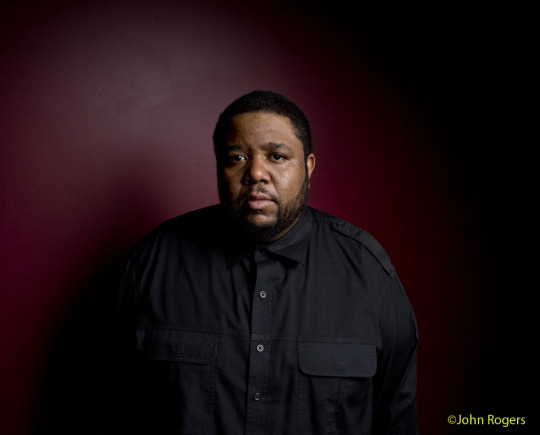
Tyshawn Sorey has done so many things over the past couple decades — classical art song, hovering free improvisation, Bill Dixon-derived walls of texture and action, funky synth jams with King Britt — that it was only a matter of time before he dealt with jazz standards. But when he finally did, the results were perplexingly hard to embrace. The trio date Mesmerism felt more strategic than involving, a box ticked. The Off-Off Broadway Guide To Synergism, a triple CD encounter with a quartet that included saxophonist Greg Osby, was as exhausting as it accomplished. But the third time’s the charm, and Continuing, which features the same trio as Mesmerism, is simultaneously deeply idiomatic, artistically necessary, and appealingly personal.
It comprises just four performances, played by Sorey on drums, Aaron Diehl on piano and Matt Brewer on bass. The tunes are not equally known, but each is in some way archetypal. “Angel Eyes” has been performed by Frank Sinatra, Stan Kenton, Ella Fitzgerald and Willie Nelson; it’s one of those hills that every jazz musician of a certain age had to climb. Wayne Shorter’s “Reincarnation Blues,” Ahmad Jamal’s “Seleritus” and Harold Mabern’s “In What Direction Are You Headed?” each tap into a particular essence, and each happens to be the work of a recently departed jazz composer who meant a lot to Sorey, which may explain why this album feels so emotionally direct, even when the trio takes a tune somewhere it wasn’t built to go.
Art Blakey and the Jazz Messengers gave Shorter’s “Reincarnation Blues” a typically hard-swinging treatment. The trio slows it way down, playing it first as a slow, sauntering blues, and then handing it to Diehl, whose solo around the eight-minute mark is a gravity-defying marvel of sound-mass management. “Seleritus” runs over four times as long as Jamal was wont to play the tune, during which time the group respectfully recreates Jamal’s suave voicings and lightly percolating grooves, and then patiently refashions them into a quietly singing exposition of masterful resource husbandry. “Angel Eyes” is nearly as long and nearly stationary, hovering with delicate suspense. Perhaps the most remarkable thing is how little Sorey plays, doling out the sounds of his hi-hat like they’re the sole bag of rations that must keep you alive until spring. The Mabern tune breaks that spell with a soulful roil so visceral that you might miss the ingenious rearrangements taking place every second.
Bill Meyer
#tyshawn sorey#continuing#pi#bill meyer#albumreview#dusted magazine#jazz#Aaron Diehl#Matt Brewer#Bandcamp
0 notes
Text
The first time I heard this piece, I was 18 years old. It was 1988. I discovered Geri Allen through her work on Steve Coleman and FIve Elements (an incredible ensemble of musicians that, in addition to Allen and bandleader Steve Coleman (sax), featured DK Dyson, Cassandra Wilson, Kevin Bruce Harris, Graham Haynes, Marvin "Smitty" Smith and Greg Osby) and I quickly discovered that what she was doing was bigger than the M-Base ("macro-basic array of structured extemporization") sound that Coleman was doing, and that she was speaking my musical language.
This entire album opened my eyes in a very real way. I am obsessed with musical articulation. What is the musical piece saying, and is it saying it clearly?
Today would have been Geri Allen's 66th birthday. Maybe someone will hear her music today and have their world changed.
1 note
·
View note